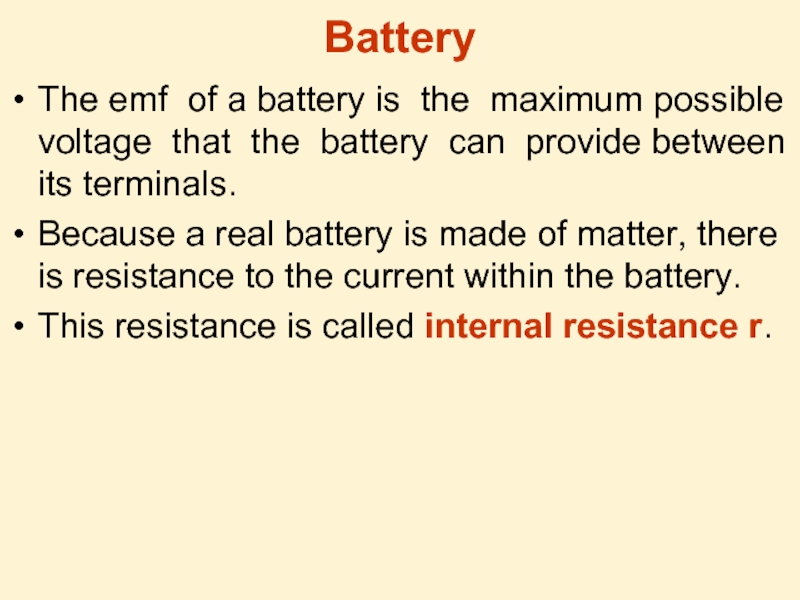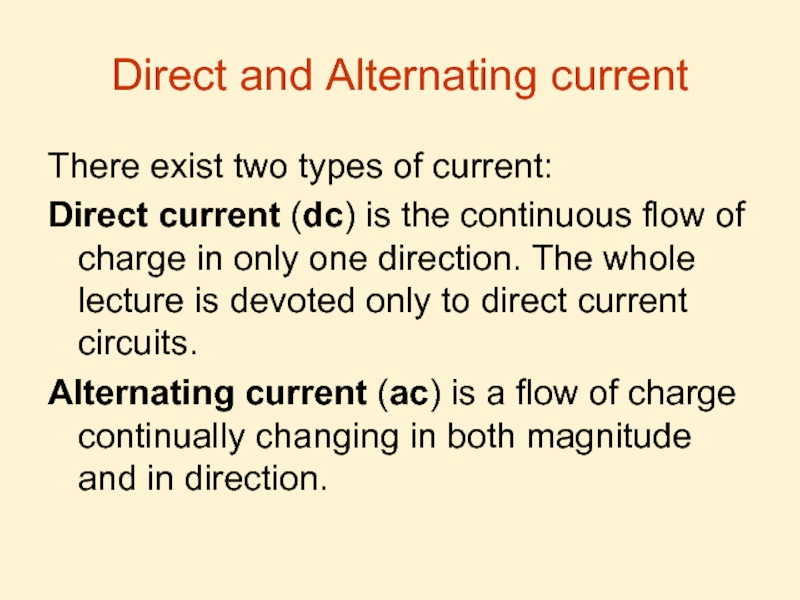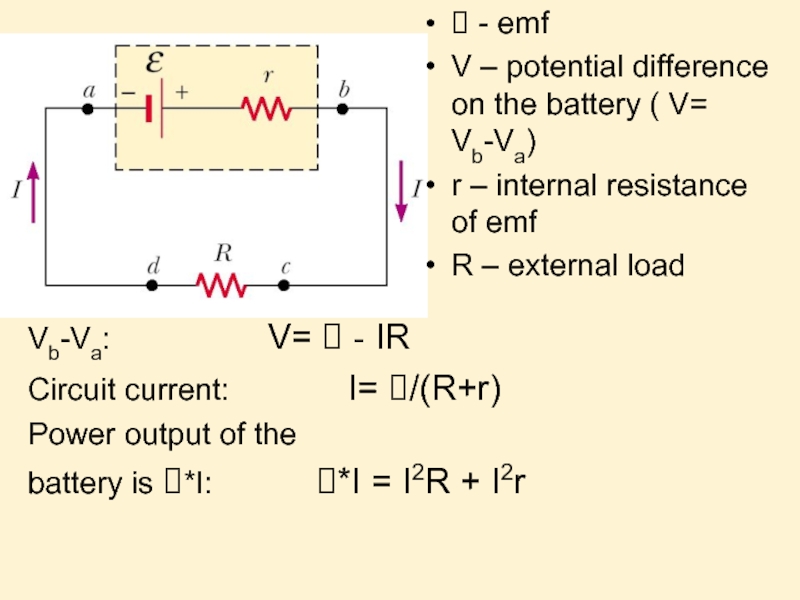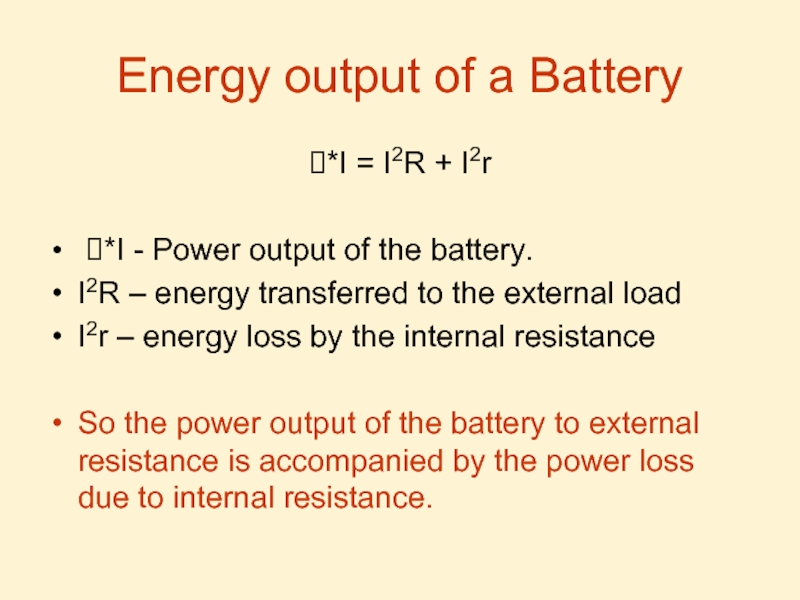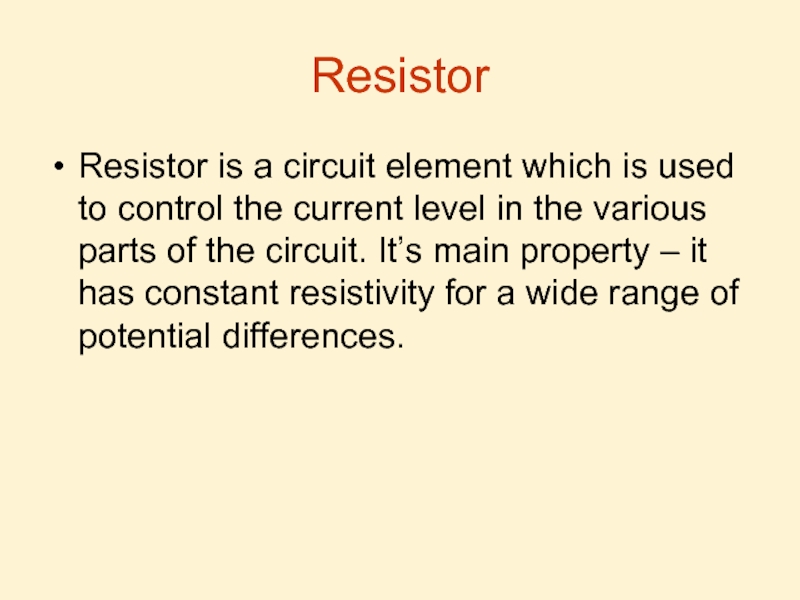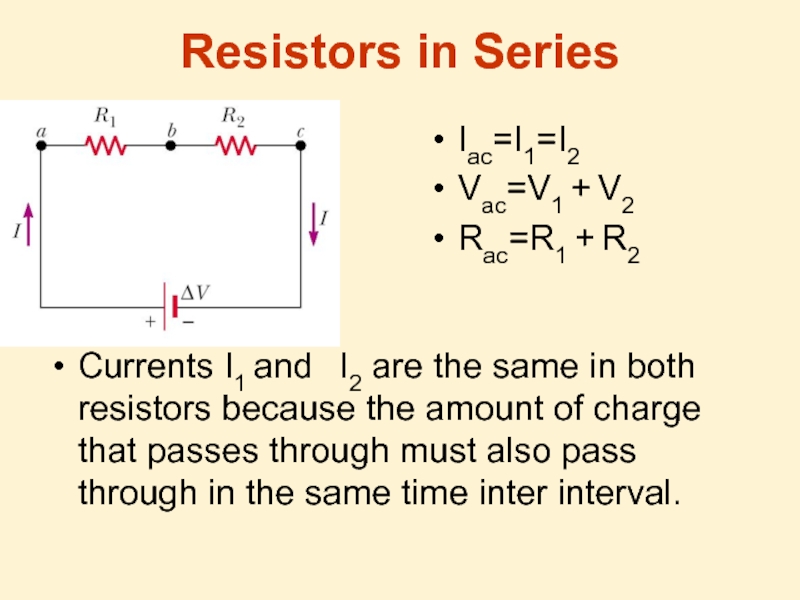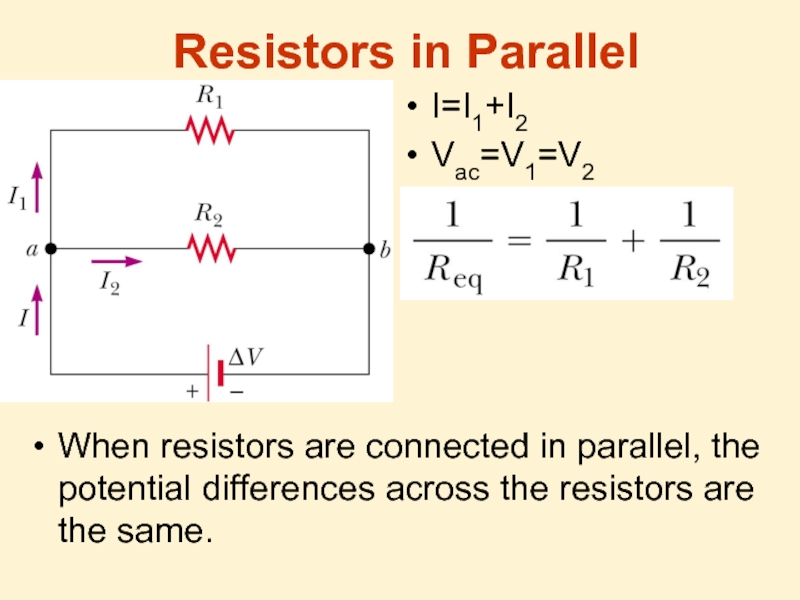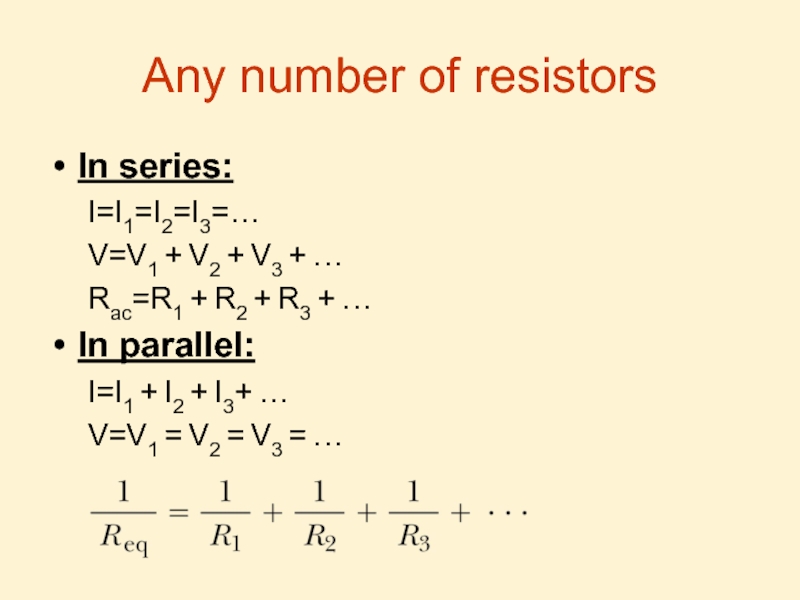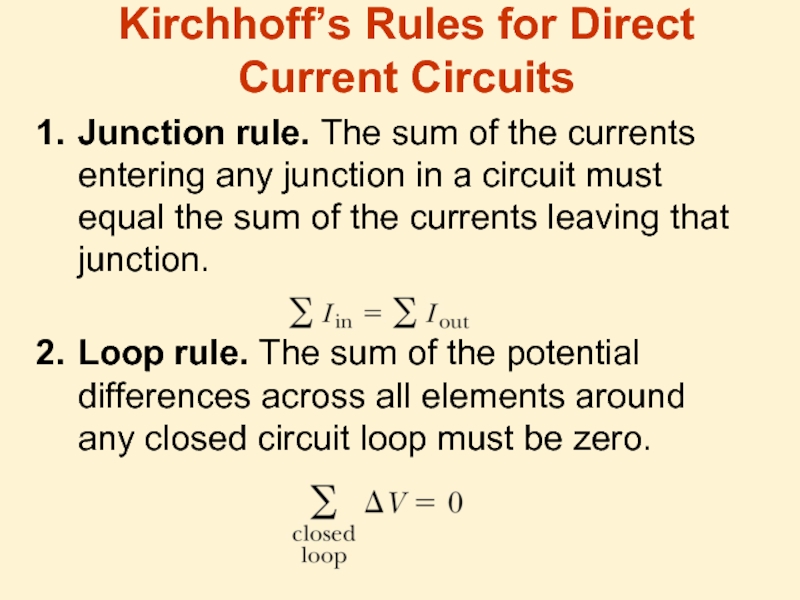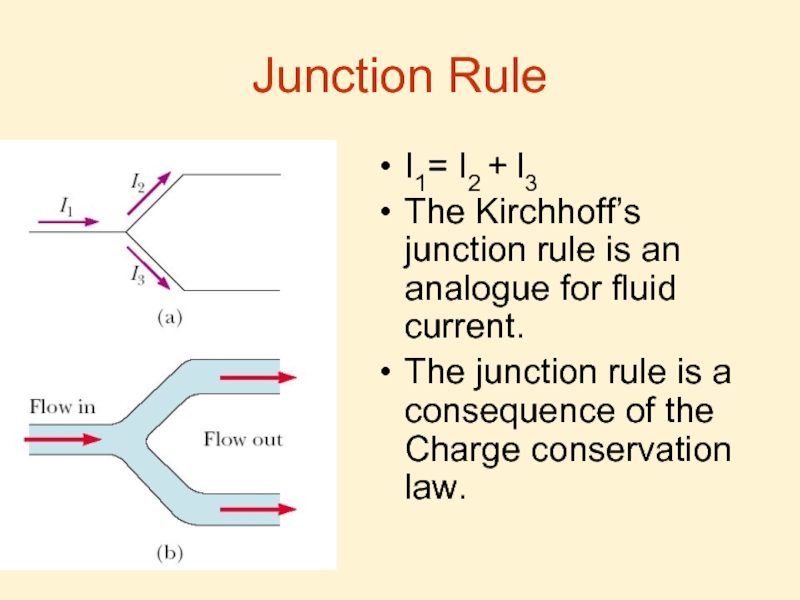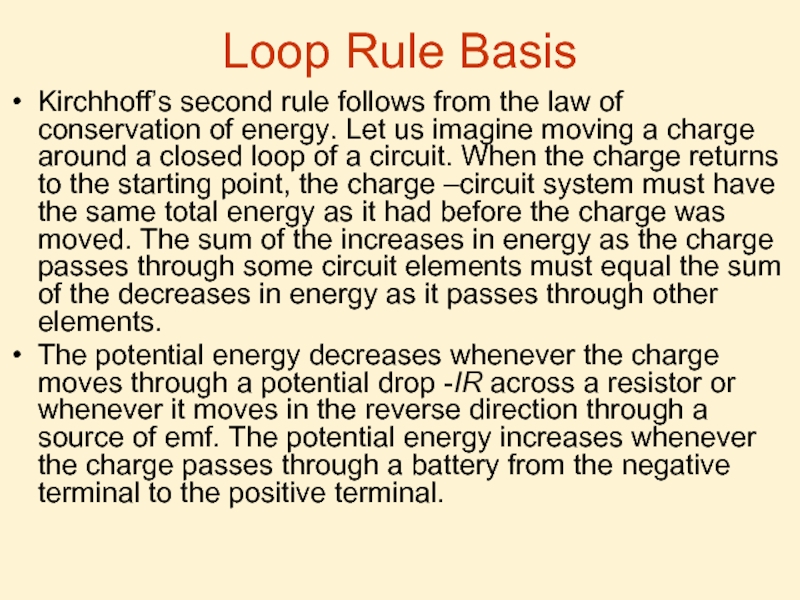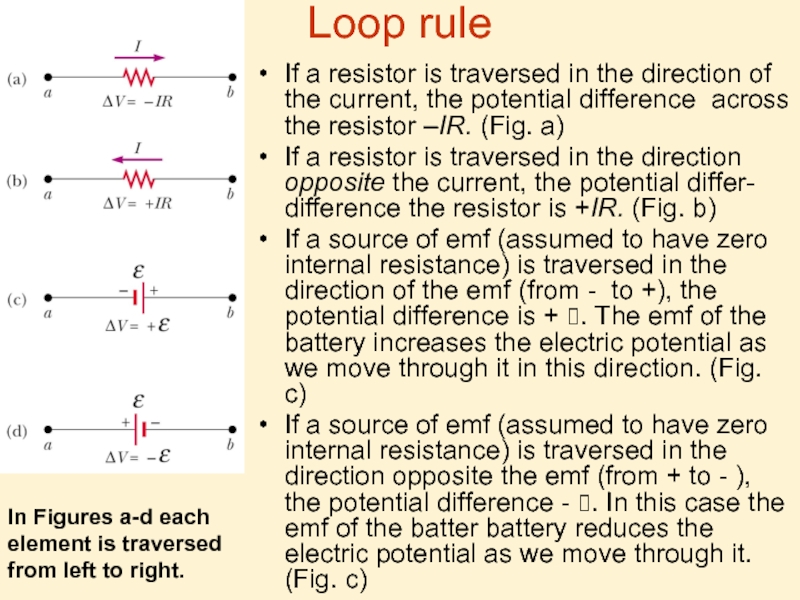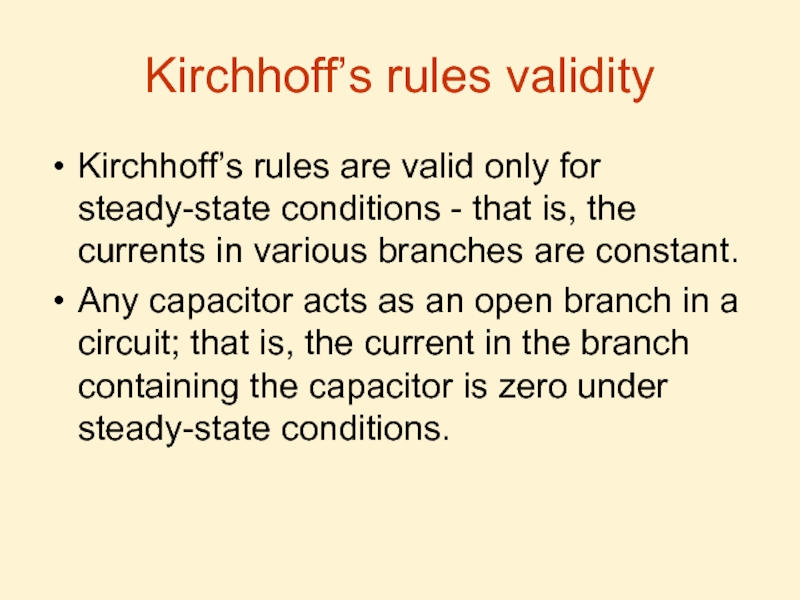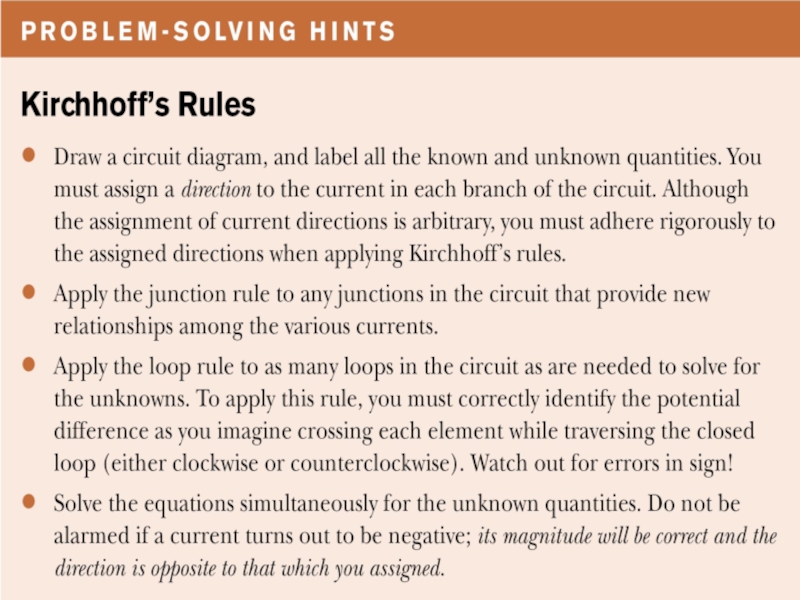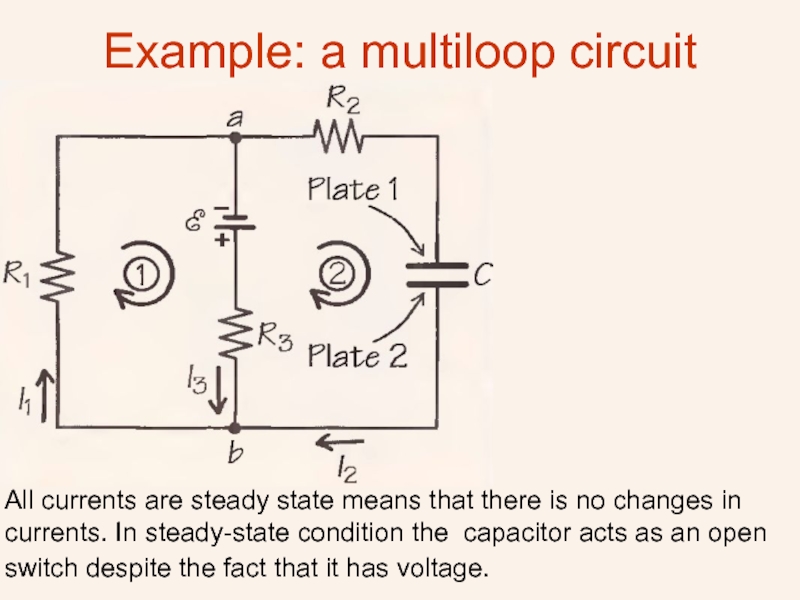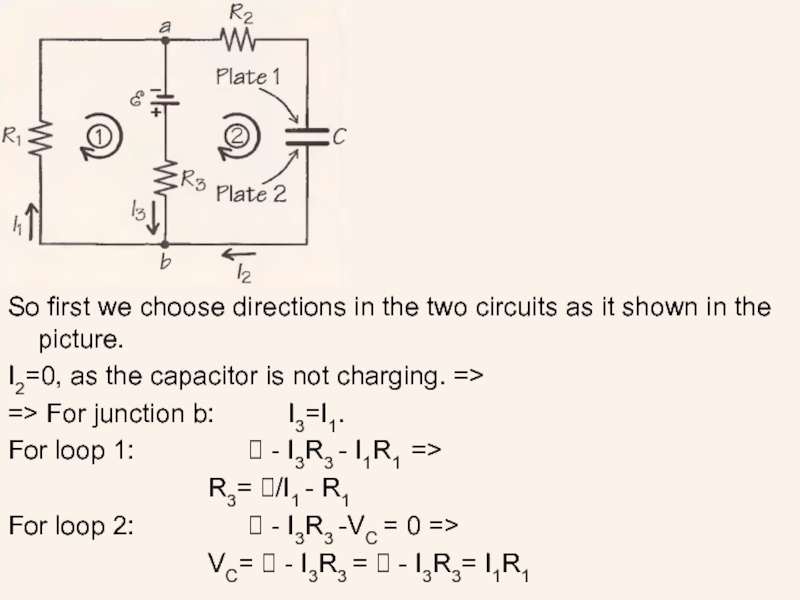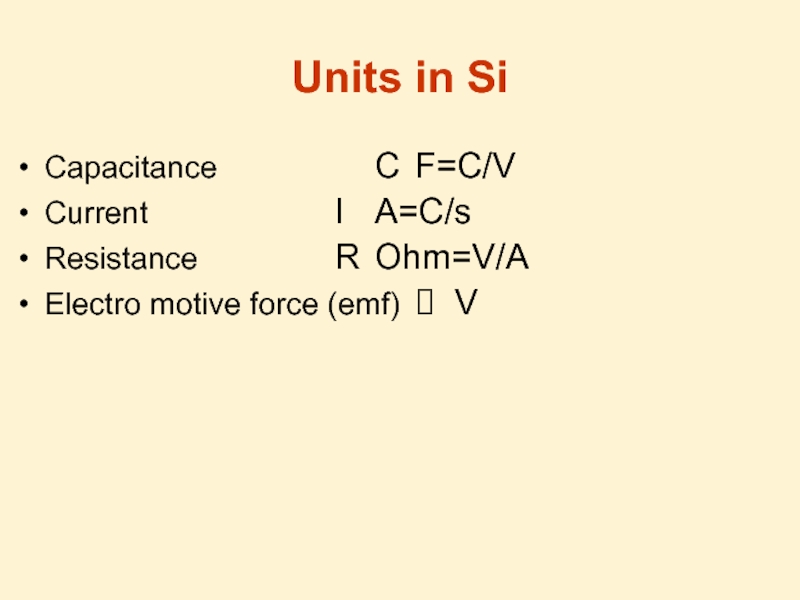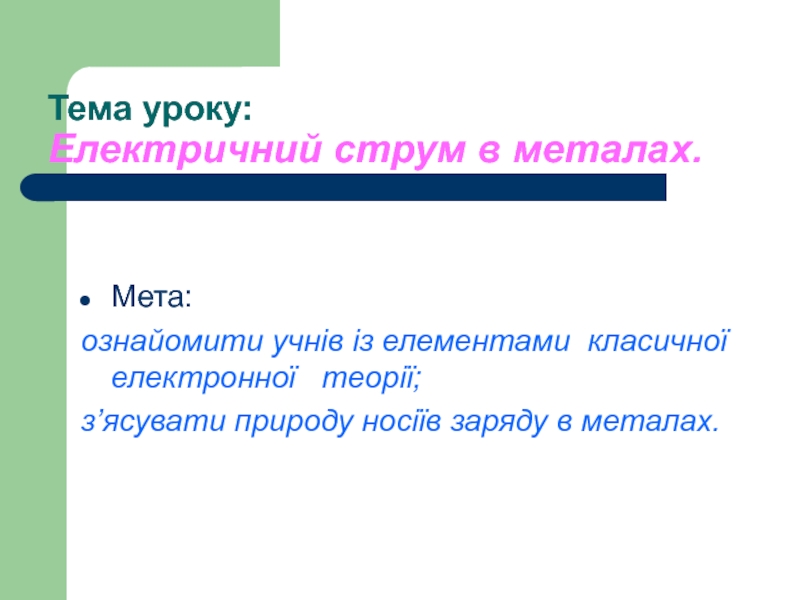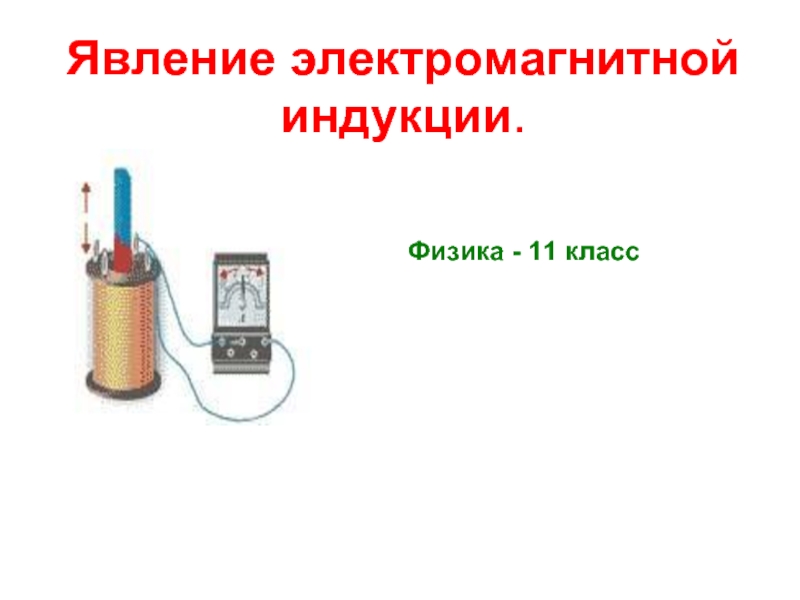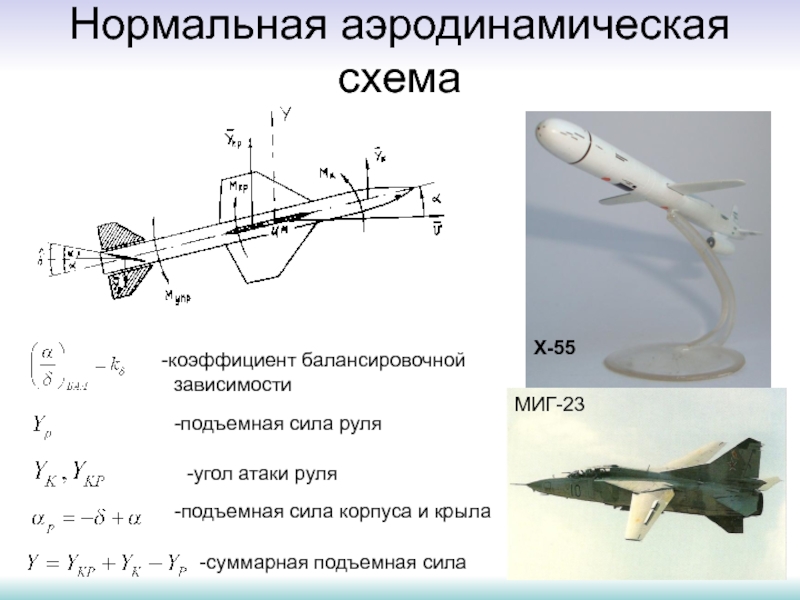Power and Oil and Gas Industry
Physical Engineering Department
Physics 1
Voronkov Vladimir Vasilyevich
- Главная
- Разное
- Дизайн
- Бизнес и предпринимательство
- Аналитика
- Образование
- Развлечения
- Красота и здоровье
- Финансы
- Государство
- Путешествия
- Спорт
- Недвижимость
- Армия
- Графика
- Культурология
- Еда и кулинария
- Лингвистика
- Английский язык
- Астрономия
- Алгебра
- Биология
- География
- Детские презентации
- Информатика
- История
- Литература
- Маркетинг
- Математика
- Медицина
- Менеджмент
- Музыка
- МХК
- Немецкий язык
- ОБЖ
- Обществознание
- Окружающий мир
- Педагогика
- Русский язык
- Технология
- Физика
- Философия
- Химия
- Шаблоны, картинки для презентаций
- Экология
- Экономика
- Юриспруденция
Battery. Direct and Alternating current презентация
Содержание
- 1. Battery. Direct and Alternating current
- 2. Battery The emf of a battery is
- 3. Direct and Alternating current There exist two
- 4. Vb-Va: V= - IR Circuit current: I= /(R+r)
- 5. Energy output of a Battery *I =
- 6. Resistor Resistor is a circuit element which
- 7. Resistors in Series Iac=I1=I2 Vac=V1 + V2
- 8. Resistors in Parallel I=I1+I2 Vac=V1=V2
- 9. Any number of resistors In series: I=I1=I2=I3=…
- 10. Kirchhoff’s Rules for Direct Current Circuits Junction
- 11. Junction Rule I1= I2 + I3 The
- 12. Loop Rule Basis Kirchhoff’s second rule follows
- 13. Loop rule If a resistor is traversed
- 14. Kirchhoff’s rules validity Kirchhoff’s rules are valid
- 16. Example: a multiloop circuit All currents
- 17. So first we choose directions in
- 18. Units in Si Capacitance C F=C/V Current I A=C/s Resistance R Ohm=V/A Electro motive force (emf) V
Слайд 1Republic of Kazakhstan
Ministry of Education and Science
Kazakh-British Technical University
Faculty of
Слайд 2Battery
The emf of a battery is the maximum possible voltage that
the battery can provide between its terminals.
Because a real battery is made of matter, there is resistance to the current within the battery.
This resistance is called internal resistance r.
Because a real battery is made of matter, there is resistance to the current within the battery.
This resistance is called internal resistance r.
Слайд 3Direct and Alternating current
There exist two types of current:
Direct current
(dc) is the continuous flow of charge in only one direction. The whole lecture is devoted only to direct current circuits.
Alternating current (ac) is a flow of charge continually changing in both magnitude and in direction.
Alternating current (ac) is a flow of charge continually changing in both magnitude and in direction.
Слайд 4Vb-Va: V= - IR
Circuit current: I= /(R+r)
Power output of the
battery is
*I: *I = I2R + I2r
- emf
V – potential difference on the battery ( V= Vb-Va)
r – internal resistance of emf
R – external load
Слайд 5Energy output of a Battery
*I = I2R + I2r
*I -
Power output of the battery.
I2R – energy transferred to the external load
I2r – energy loss by the internal resistance
So the power output of the battery to external resistance is accompanied by the power loss due to internal resistance.
I2R – energy transferred to the external load
I2r – energy loss by the internal resistance
So the power output of the battery to external resistance is accompanied by the power loss due to internal resistance.
Слайд 6Resistor
Resistor is a circuit element which is used to control the
current level in the various parts of the circuit. It’s main property – it has constant resistivity for a wide range of potential differences.
Слайд 7Resistors in Series
Iac=I1=I2
Vac=V1 + V2
Rac=R1 + R2
Currents I1 and I2
are the same in both resistors because the amount of charge that passes through must also pass through in the same time inter interval.
Слайд 8Resistors in Parallel
I=I1+I2
Vac=V1=V2
When resistors are connected in parallel, the potential differences
across the resistors are the same.
Слайд 9Any number of resistors
In series:
I=I1=I2=I3=…
V=V1 + V2 + V3 + …
Rac=R1
+ R2 + R3 + …
In parallel:
I=I1 + I2 + I3+ …
V=V1 = V2 = V3 = …
In parallel:
I=I1 + I2 + I3+ …
V=V1 = V2 = V3 = …
Слайд 10Kirchhoff’s Rules for Direct Current Circuits
Junction rule. The sum of the
currents entering any junction in a circuit must equal the sum of the currents leaving that junction.
Loop rule. The sum of the potential differences across all elements around any closed circuit loop must be zero.
Loop rule. The sum of the potential differences across all elements around any closed circuit loop must be zero.
Слайд 11Junction Rule
I1= I2 + I3
The Kirchhoff’s junction rule is an analogue
for fluid current.
The junction rule is a consequence of the Charge conservation law.
The junction rule is a consequence of the Charge conservation law.
Слайд 12Loop Rule Basis
Kirchhoff’s second rule follows from the law of conservation
of energy. Let us imagine moving a charge around a closed loop of a circuit. When the charge returns to the starting point, the charge –circuit system must have the same total energy as it had before the charge was moved. The sum of the increases in energy as the charge passes through some circuit elements must equal the sum of the decreases in energy as it passes through other elements.
The potential energy decreases whenever the charge moves through a potential drop -IR across a resistor or whenever it moves in the reverse direction through a source of emf. The potential energy increases whenever the charge passes through a battery from the negative terminal to the positive terminal.
The potential energy decreases whenever the charge moves through a potential drop -IR across a resistor or whenever it moves in the reverse direction through a source of emf. The potential energy increases whenever the charge passes through a battery from the negative terminal to the positive terminal.
Слайд 13Loop rule
If a resistor is traversed in the direction of the
current, the potential difference across the resistor –IR. (Fig. a)
If a resistor is traversed in the direction opposite the current, the potential differ- difference the resistor is +IR. (Fig. b)
If a source of emf (assumed to have zero internal resistance) is traversed in the direction of the emf (from - to +), the potential difference is + . The emf of the battery increases the electric potential as we move through it in this direction. (Fig. c)
If a source of emf (assumed to have zero internal resistance) is traversed in the direction opposite the emf (from + to - ), the potential difference - . In this case the emf of the batter battery reduces the electric potential as we move through it. (Fig. c)
If a resistor is traversed in the direction opposite the current, the potential differ- difference the resistor is +IR. (Fig. b)
If a source of emf (assumed to have zero internal resistance) is traversed in the direction of the emf (from - to +), the potential difference is + . The emf of the battery increases the electric potential as we move through it in this direction. (Fig. c)
If a source of emf (assumed to have zero internal resistance) is traversed in the direction opposite the emf (from + to - ), the potential difference - . In this case the emf of the batter battery reduces the electric potential as we move through it. (Fig. c)
In Figures a-d each element is traversed from left to right.
Слайд 14Kirchhoff’s rules validity
Kirchhoff’s rules are valid only for steady-state conditions -
that is, the currents in various branches are constant.
Any capacitor acts as an open branch in a circuit; that is, the current in the branch containing the capacitor is zero under steady-state conditions.
Any capacitor acts as an open branch in a circuit; that is, the current in the branch containing the capacitor is zero under steady-state conditions.
Слайд 16Example: a multiloop circuit
All currents are steady state means that there
is no changes in currents. In steady-state condition the capacitor acts as an open switch despite the fact that it has voltage.
Слайд 17
So first we choose directions in the two circuits as it
shown in the picture.
I2=0, as the capacitor is not charging. =>
=> For junction b: I3=I1.
For loop 1: - I3R3 - I1R1 =>
R3= /I1 - R1
For loop 2: - I3R3 -VC = 0 =>
VC= - I3R3 = - I3R3= I1R1
I2=0, as the capacitor is not charging. =>
=> For junction b: I3=I1.
For loop 1: - I3R3 - I1R1 =>
R3= /I1 - R1
For loop 2: - I3R3 -VC = 0 =>
VC= - I3R3 = - I3R3= I1R1

